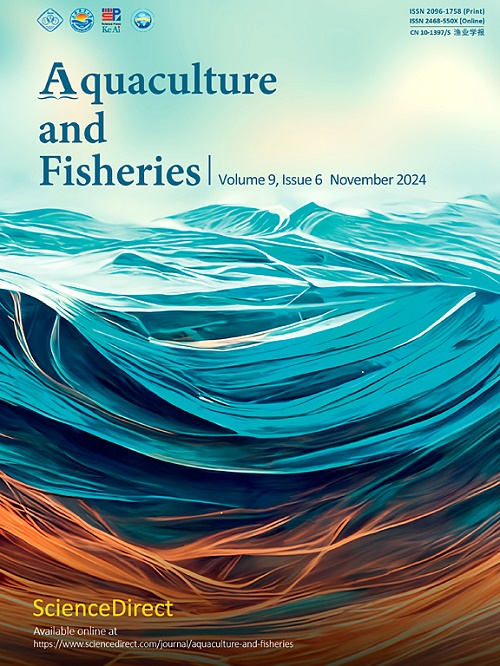A compact underwater stereo vision system for measuring fish
Q1 Agricultural and Biological Sciences
引用次数: 0
Abstract
In the context of aquaculture, fish length is a key parameter to assess fish stocks, essential for feeding regime and contributes for decisions at several production levels. However, taking length measurements is a cumbersome task that, when applied to living individuals, can induce considerable stress, increasing the risk of damage or hindering their growth. Computer vision is one of the most used non-contact tools to overcome this issue, being fast, consistent and repeatable. However, its use in aquatic environments is limited by the high cost, the difficulty of calibrating the system in underwater conditions and the complexity of implementation. This paper proposes a low-cost easy-to-use vision system that can take measurements on live fish in aquatic conditions, without the need for a special calibration or a demanding in-water calibration service. The present work implemented a compact stereo vision system and developed a method that estimates the correct length of fish, based on the variation of the angle of incidence of the light rays in the water. Given some structural conditions such as a short baseline, the system is able to measure fish with an error of less than 1%. The short baseline allows to have a compact system and reduces the effect of water refraction on the 3D reconstruction. A set of experiments were performed with real fish, working robustly for a set of orientations of the fish (even when the caudal fin and snout are on different distances to the cameras).
用于测量鱼类的紧凑型水下立体视觉系统
在水产养殖方面,鱼体长度是评估鱼类种群的关键参数,对饲养制度至关重要,有助于在多个生产层面做出决策。然而,测量鱼体长度是一项繁琐的工作,如果对活体进行测量,可能会造成很大的压力,增加鱼体受损的风险或阻碍鱼体生长。计算机视觉是解决这一问题最常用的非接触式工具之一,具有快速、一致和可重复的特点。然而,由于成本高昂、在水下条件下校准系统困难以及实施复杂,计算机视觉在水生环境中的应用受到了限制。本文提出了一种低成本、易于使用的视觉系统,它可以在水生条件下对活鱼进行测量,而不需要特殊的校准或苛刻的水中校准服务。本研究采用了一种紧凑型立体视觉系统,并开发了一种根据光线在水中入射角的变化来估算鱼类正确长度的方法。在短基线等结构条件下,该系统测量鱼类的误差小于 1%。短基线可以使系统更加紧凑,并减少水折射对三维重建的影响。该系统使用真鱼进行了一系列实验,对鱼的一系列方向(即使尾鳍和吻部与摄像头的距离不同)都能稳健地工作。
本文章由计算机程序翻译,如有差异,请以英文原文为准。
求助全文
约1分钟内获得全文
求助全文
来源期刊

Aquaculture and Fisheries
Agricultural and Biological Sciences-Aquatic Science
CiteScore
7.50
自引率
0.00%
发文量
54
审稿时长
48 days
期刊介绍:
 求助内容:
求助内容: 应助结果提醒方式:
应助结果提醒方式:


